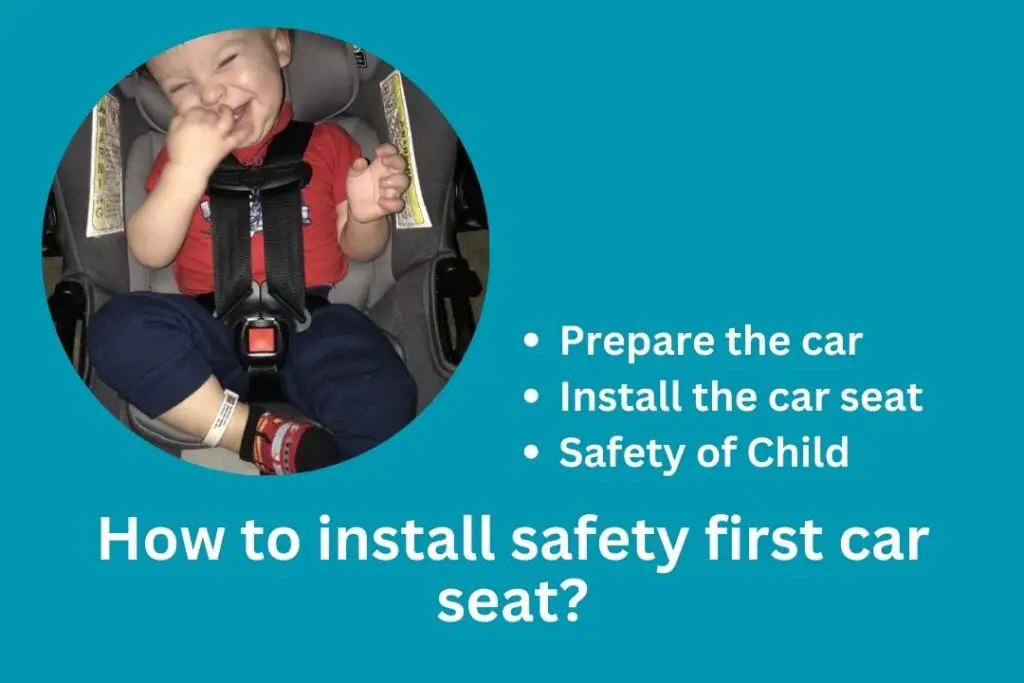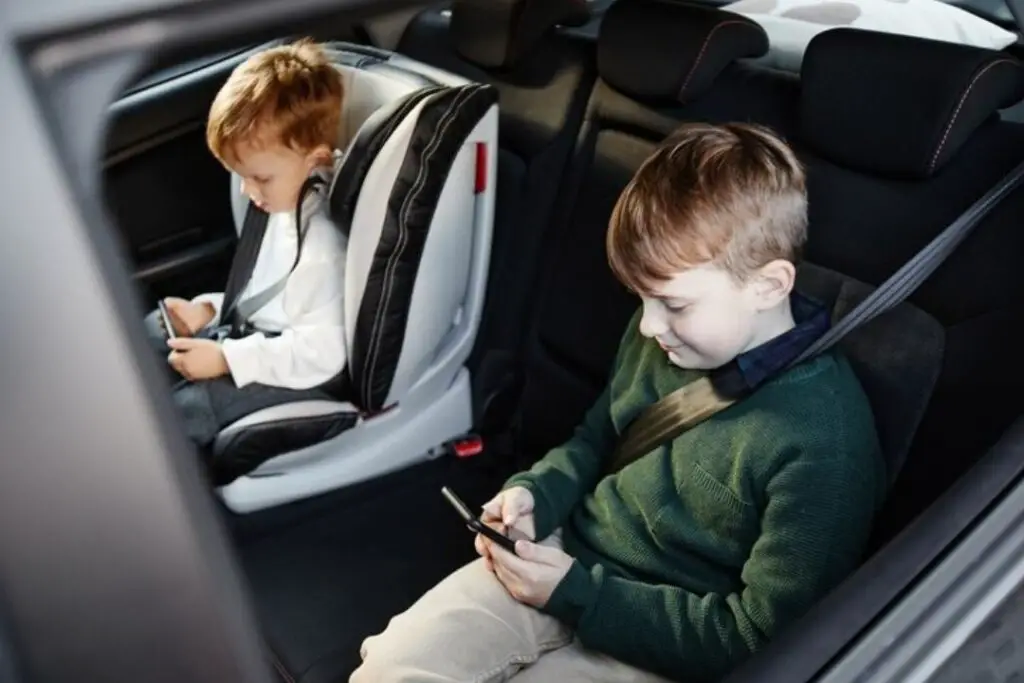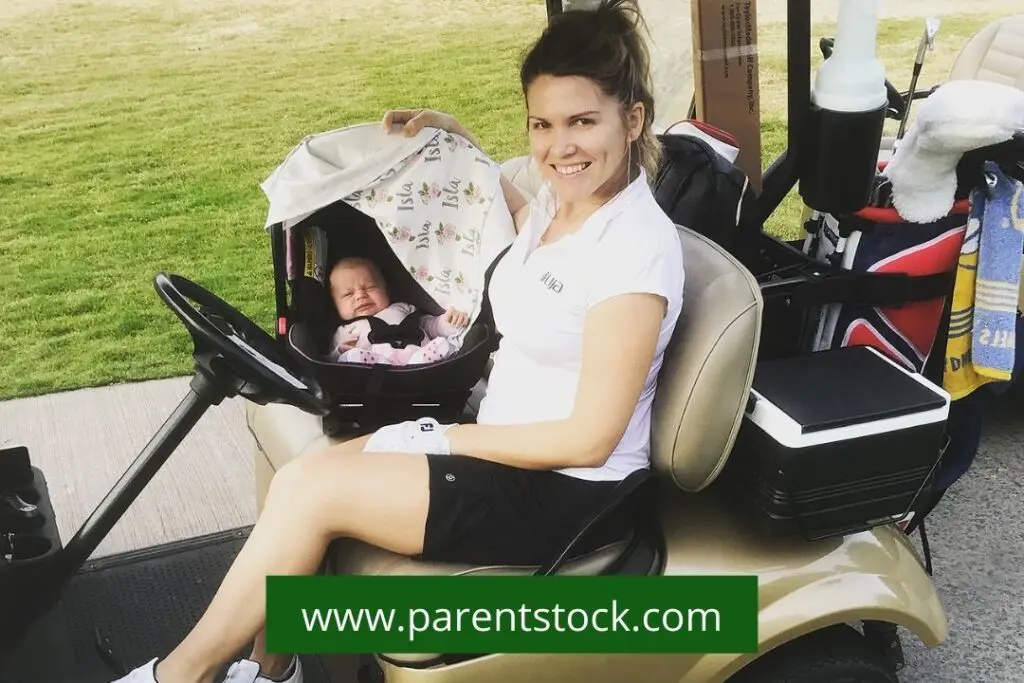Children are more vulnerable to harm or death in motor vehicle collisions; as a result, car seats are an essential safety device. Many parents have trouble installing car seats correctly, despite the fact that doing so may greatly minimise the likelihood of serious damage or death in the event of a vehicle accident. They want to know how to install safety first car seat?
This blog post will walk you through the process of installing a car seat securely, from selecting the correct seat for your kid to reading the instructions to prepping your vehicle to installing the seat and buckling the child in.
Parents may make automobile trips safer for their kids if they follow these guidelines.
Determine the right car seat
To guarantee your child’s safety in the automobile, you must carefully choose the appropriate car seat. Guidelines for choosing the right car seat for your kid are provided below.
Infant car seats: Car seats for newborns are rear-facing only and are suitable for infants up to 35 pounds. A baby should ride in a car seat designed for infants until he or she is at least one year old, or until the child reaches the maximum weight allowed by the car seat’s manufacturer, whichever comes first.
Convertible car seats: These car seats may be used as both rear-facing and forward-facing, making them a cost-effective alternative for parents. These suited for youngsters who weigh up to 65 pounds or are at least two years old.
Booster seats: Booster seats are meant for older children who have outgrown their car seats but are still too little to wear adult seat belts. These designed for kids aged 4 and above who weigh between 40 and 100 pounds.
Combination car seats: Children up to 100 pounds may ride safely in a combination car seat, which combines a convertible and a booster seat.
The car seat you choose must be appropriate for your child’s age, height, and weight in addition to fitting in your vehicle. When purchasing a car seat, make sure the child meets the height and weight requirements based on the instructions provided.
Read More: Best Travel Car Seat For 3 Year Old
Read the car seat manual
For proper installation and safe usage, reading the car seat’s handbook is essential. Some helpful hints for making sense of the manual: How to install safety first car seat?
Read the manual before you buy the car seat: Don’t buy a car seat until you’ve read the instructions to familiarise yourself with all of its features and safety precautions. You’ll be able to choose the safest car seat possible for your kid with this information in hand.
Understand the car seat’s installation process: Get familiar with the car seat’s installation procedure: There ought to be detailed instructions for putting the seat in your vehicle inside the handbook. Before trying to install the car seat, make sure you have read and fully understand the instructions.
Check the weight and height limits: Verify the car seat’s weight and height restrictions, which should be listed in the instructions. Make sure your youngster meets these requirements before using the car seat.
Understand the car seat’s features: Learn about the car seat’s functions, the user handbook should include the car seat’s functions, such as the harness system and the reclining angle. If you want to keep your kid secure, you should learn how to utilise these functions.
Keep the manual for future reference: Keep the instructions on hand; you never know when you may need them for anything like changing the car seat to fit your growing kid. Place the handbook somewhere it will be readily accessible in case you need to refer to it later.
Learning the ins and outs of car seat installation and usage from the instructions is the best way to avoid injury.
Prepare the car
How to install safety first car seat? Setting up the vehicle in a way that allows for a secure installation of the car seat is a good safety precaution to take. You may get the automobile ready by following these steps:
Clean the car:
Whether it’s crumbs from a meal or toys left behind by kids, it’s time to clean out the vehicle. Car seat installation will be less of a hassle and more secure as a result of this.
Check the seat belts:
Make that the seat belts in the vehicle are in excellent working order. Pull them out carefully to check that they did not twisted or frayed and that they lock securely.
Choose an appropriate locale:
Choose the safest spot in your vehicle to install the car seat. The safest placement for the car seat is in the rear, ideally in the centre. Nevertheless, if your vehicle lacks a centre seat, install the car seat on the side where you will have the best view of your kid at all times.
Check for LATCH anchors:
Locate the LATCH anchors if your vehicle is equipped with them; LATCH stands for Lower Anchors and Tethers for Children. These anchors provide a safe and simple car seat installation.
Tweak the recline angle of the car seat:
Tweak the recline angle of the car seat in accordance with the manufacturer’s recommendations. When the car seat is properly positioned, with the precise recline angle, your child’s head will not fall forward.
Preparing the vehicle before installing the car seat will increase the likelihood of a successful installation.
Install the car seat
Proper installation of the car seat is essential to guaranteeing the safety of your kid while travelling. The car seat installation procedure is as follows:
Position the car seat:
Place the car seat in the spot inside the vehicle that you have selected. Make sure a rear-facing car seat installed with the child facing the back of the vehicle.
Route the seat belt or LATCH system:
Attach the LATCH system to the car’s LATCH anchors or thread the seat belt through the car seat, as appropriate for your vehicle and car seat. For the best possible fit in your automobile, be sure to read and follow the directions for installing the car seat.
Secure the car seat:
While installing a car seat, be sure there is no slack in the seat belt or LATCH system. The car seat shouldn’t sway more than an inch front to back or side to side after it’s properly installed.
Check the angle of the car seat:
Make sure the vehicle seat is neither too upright nor too reclined by checking the angle. Adjust the vehicle seat so that the back of the head and neck are properly supported.
Perform a final check:
Make one last inspection: Make sure the car seat installed correctly and that it is secure. Be sure the chest clip is at your child’s armpit level and that the straps are the right length.
Your kid will be as safe as possible in the vehicle if you follow these instructions for installing the car seat.
Secure the child in the car seat
How to install safety first car seat? It is just as crucial to properly fasten your kid into the car seat as it is to place the seat in the vehicle. Please follow these instructions to properly install your child’s car seat:
Adjust the harness straps:
Tweak the harness straps to fit your child’s frame. For a rear-facing seat, the straps should be at or below the child’s shoulders; for a forward-facing seat, they should be at or above the child’s shoulders.
Secure the chest clip:
Fasten the chest strap securely under your armpits. In the case of an accident, this will retain the harness straps in place and keep your kid safely secured in the car seat.
Tighten the harness straps:
Adjust the shoulder straps so they are snug but not too tight. No extra fabric should fit in a pinch.
Check for proper fit:
Make sure the harness straps fit your youngster snugly in the car seat. When properly adjusted, the harness straps should rest flat on your child’s chest.
Double-check the installation:
Verify that the car seat is properly fastened, with no dangling belts or other potential hazards.
Make sure your kid is as safe as possible in the vehicle by using the seat belt properly. Always double-check that your child’s car seat and harness are in proper working order before each trip.
Read More: Best Convertible Car Seat
Final checks
How to install safety first car seat? Make sure the car seat is properly placed and your kid safely buckled in before setting off on your trip. Here are a few last things to double check:
- Ensure sure the car seat tilted at the right angle to provide proper support for your child’s head and neck. Make sure the back of the car seat is flat if you’re using a rear-facing car seat.
- Make sure the car seat is fitted correctly: Make sure the car seat is properly fastened, with no wiggle room either forward or backward. Ensure the safety of the vehicle seat by shaking it vigorously.
- Verify the harness straps are properly tightened and a snug fit has been achieved for your youngster. It’s important to have the chest clip rest just below the armpits.
- Ensure sure there are no objects floating about in the vehicle that might cause injury in the case of an accident.
- Go for a test drive with your kid in the car seat to make sure it fitted properly and that your youngster is safe.
These last-minute inspections can help you give your kid the safest ride possible. Always double-check that your child’s car seat and harness are in proper working order before each trip.
Safety First Convertible Car Seat Installation And All-In-One Installation
How to install safety first car seat? It recommended you read the car seat handbook before attempting to install a Safety First convertible car seat or all-in-one car seat, since installation instructions may differ by model. General instructions for installing a Safety First convertible or all-in-one car seat are as follows:
Determine the appropriate location:
Find the right spot. Choose a good spot for the car seat in the backseat. There should be enough space for the car seat to fit in, and no active airbags should be in the way.
Adjust the recline angle:
Recline the seat: Recline the vehicle seat as instructed by the car seat’s user handbook. It’s important to recline the car seat so that your child’s head and neck supported, but not so far back that their head falls forward.
Position the car seat:
The car seat should install at the rear of the vehicle with the child facing backwards.
Route the seat belt or LATCH system:
Attach the LATCH system to the car’s LATCH anchors or thread the seat belt through the car seat, as appropriate for your vehicle and car seat. For the best possible fit in your automobile, be sure to read and follow the directions for installing the car seat.
Tighten the seat belt or LATCH system:
When using a LATCH or seat belt, make sure there is no slack in the system by tightening the belt or strap until it is secure. The car seat shouldn’t sway more than an inch front to back or side to side after and properly installed.
Check the angle of the car seat:
Make sure the vehicle seat is neither too upright or too reclined by checking the angle. Adjust the vehicle seat so that the back of the head and neck properly supported.
Install the base (if applicable):
If your convertible or all-in-one car seat has a base, install it according to the instructions in the seat’s user manual. You need to make sure the foundation fastened to the vehicle properly.
Convert to forward-facing (if applicable):
If your kid is ready to face forward and you are using a convertible car seat or all-in-one car seat, turn the seat around by following the directions in the user handbook.
Secure your child in the car seat:
Install the car seat according to the instructions in the user handbook. Pull the shoulder straps up to your shoulders and tighten the chest clip under your arms.
Perform final checks:
Make sure the car seat properly fitted and that your kid safe before setting off. You should make sure the car seat is at the right angle and that the youngster properly secured in the seat using the harness.
Following these instructions and the car seat handbook attentively will ensure that your kid has a safe and pleasant trip in a Safety First convertible car seat or all-in-one car seat.
Conclusion
How to install safety first car seat? To keep your kid safe in the automobile, you must take the time to install the seat properly and buckle him or her in. You can safely install the car seat for your kid if you follow the instructions in this tutorial and read the handbook for the seat thoroughly.
Never leave the house without first making sure your child’s car seat properly installed and that the harness straps fit snugly. It’s important to double check the car seat and harness straps on a regular basis to make sure they’re still in place and in excellent working order. Your kid will have the safest possible vehicle journey if you take the time to install the car seat properly and buckle your youngster in.




